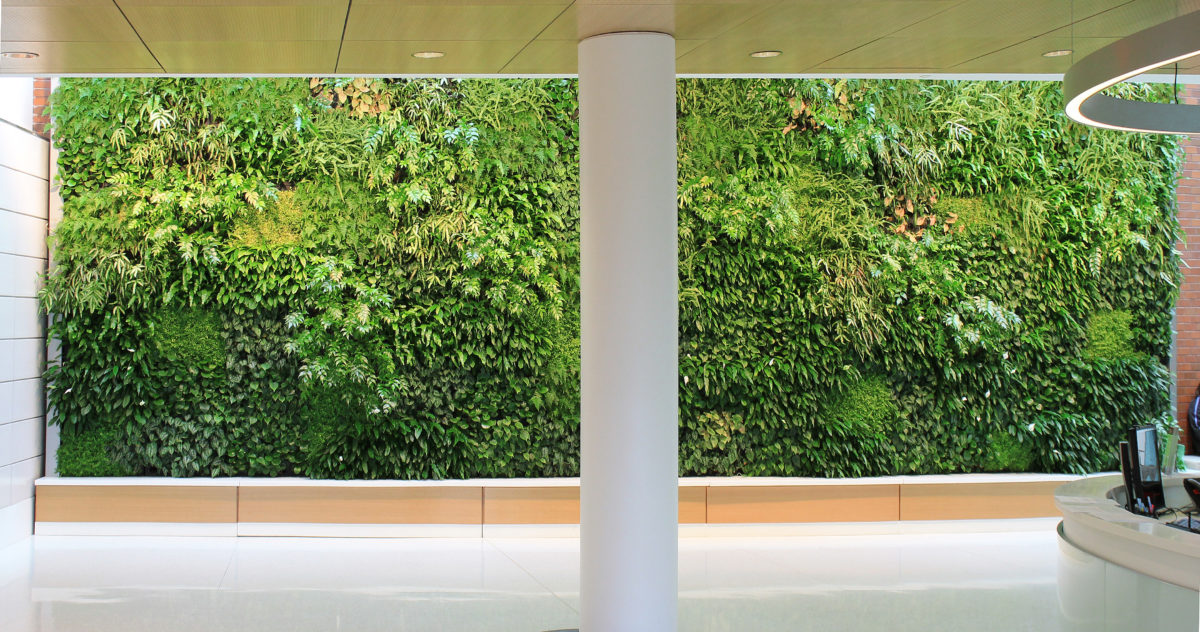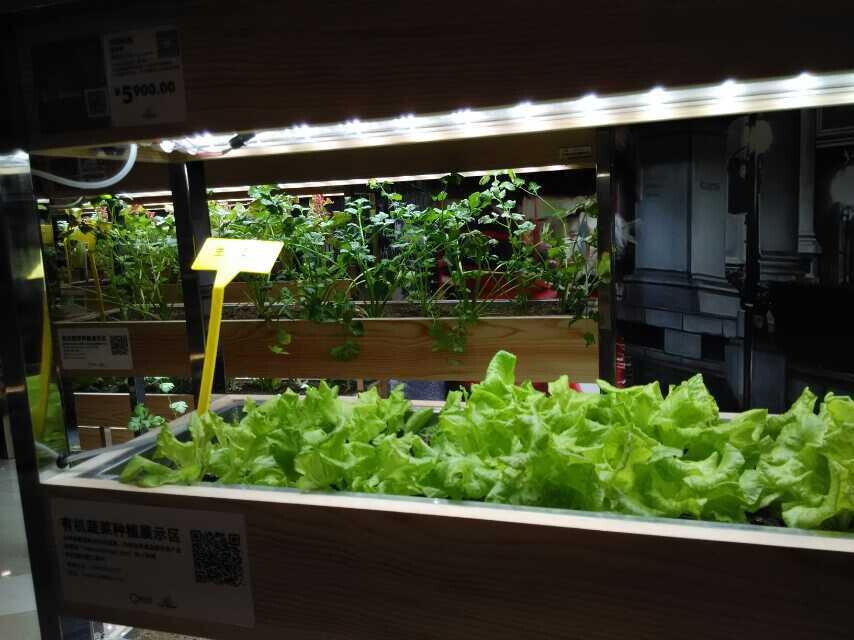Primary Light Source for Plant Factories: LED Grow Ligh _ Predicts and Extends Lamp Life
Writer:Jane Time:2021-06-11 Browse:190
Without soil or even sunlight, rows of green lettuces grow happily on multiple shelves. In this article, we will introduce the LED light source needed for plant factories - plant growth lamps, and how to predict and extend the life of LED lamps.
In the reinforced concrete forest, can there be a little green meaning to let modern people close to nature, feel nature? A plant factory might be a good choice.
LED Grow Lights for plant factories
Plant factory is through the crop years continuous production facilities in high precision environment control implement efficient agricultural system, using computer to plant growth temperature, humidity, light, co2 concentration, and nutrient solution environment conditions, such as automatic control, protect facilities within the plant reproductive or rarely influenced by natural condition restriction type mode of production of energy saving.
The Plant factory uses energy-saving LED grow light as the light source. For different plants and different growth stages, the light intensity, light quality and photoperiod are also completely different. In addition to not needing sunlight, the plants' factories' crops also don't need soil.
These well-grown vegetables are all grown in the cultivation module, depending on the nutrient solution below the module can be grown. "These nutrient solutions are prepared by professionals to provide plants with all kinds of nutrients in a timely and effective manner, to the maximum extent to meet the nutritional requirements of plants in different growth periods, so that vegetables grow fast and produce high yields."
In a plant factory, vegetables grow almost without natural control, and the growth cycle is accelerated. Lettuce planted in plant factories can be harvested in about 28 days after seedlings are transplanted, much faster than ordinary land cultivation.
"The plant factory, which is in its infancy all over the world, fundamentally changes the concept of farming. It is the way to innovate farming practices and modernize agriculture. It is also the best solution to new agricultural production and to promote farming as a manufacturing industry."
Vegetables from plant factories are already close to organic in terms of safety, but not in terms of taste. Plants have a response mechanism to severe weather conditions such as drought, freezing and flooding, producing secondary metabolites, such as the frosted green vegetables that some people like. "We also want to improve the flavor of fruits and vegetables by improving elements such as spectrum, nutrient solution and irradiation time.
The light decline of LED is related to its junction temperature, the so-called junction temperature is the temperature of semiconductor PN junction, the higher the junction temperature, the earlier the light decline, that is, the shorter the life.
If the junction temperature is 105 degrees, the life of the brightness reduced to 70% is only more than 10,000 hours, and there are 20,000 hours on 95 degrees, and the life of the junction temperature reduced to 75 degrees, there are 50,000 hours, and 65 degrees can be extended to 90,000 hours. So the key to extending life is to reduce junction temperature, but that data is only applicable to Cree's LEDs, not other companies' LEDs.
How can we extend the life of LED light source
So when we buy LED lamps and lanterns (all of which do not specifically refer to LED spotlights), we must look at its heat dissipation design.
It can be concluded from the figure that the key to prolong its life is to reduce its junction temperature. The key to lower junction temperature is to have a good radiator that can emit the heat generated by the LED in a timely manner.
Here we are not going to discuss how to design the radiator, but to discuss which radiator heat dissipation effect is relatively good. In fact, this is a junction temperature measurement problem. If we can measure the junction temperature of any radiator, we can not only compare the heat dissipation effect of various radiators, but also know the LED life that can be achieved by using this kind of radiator.
How to measure junction temperature
The junction temperature seems to be a temperature measurement problem, but the junction temperature to be measured is inside the LED, and it is not possible to put a thermometer or thermocouple into the PN junction to measure its temperature. Of course, its shell temperature can be measured with a thermocouple, and then the junction temperature can be deduced from the given thermal resistance RJC (junction to shell).
But once the radiators have been installed, things get complicated. Because the LED is usually welded to the aluminum substrate, and the aluminum substrate is installed on the radiator, if you can only measure the temperature of the radiator shell, then you must know a lot of thermal resistance to calculate the junction temperature.
Including RJC (junction to shell), RCM (shell to aluminum substrate, in fact, it should also include the thermal resistance of film printing plate), RMS (aluminum substrate to radiator), RSA (radiator to air), where as long as one data is not accurate will affect the accuracy of the test.
The diagram below shows the various thermal resistance from the LED to the radiator. This incorporates a lot of thermal resistance, further limiting its accuracy. That is to say, it is less accurate to infer junction temperature from the measured surface temperature of the radiator.
Fortunately, there is an indirect way to measure temperature, and that is to measure voltage. So which voltage is related to junction temperature? What about this relationship? Let's start with the volt-ampere characteristics of LEDs.
Temperature coefficient of volt-ampere characteristic of LED light source
We know that an LED is a semiconductor diode. It has a volt-ampere characteristic like all diodes. And like all semiconductor diodes, this volt-ampere characteristic has a temperature characteristic. The characteristic is that as the temperature rises, the volt-ampere characteristic shifts to the left. The volt-ampere characteristic and the temperature characteristic of the LED are drawn in the figure.
It is assumed that the LED is supplied with Io constant current. When the junction temperature is T1, the voltage is V1, and when the junction temperature rises to T2, the whole volt-ampage characteristic shifts to the left, the current is Io constant, and the voltage is V2. These two voltage differences are removed by temperature, and the temperature coefficient, expressed in mV/oC, is obtained. For ordinary silicon diodes, this temperature coefficient is about -2mV/oC. But most LEDs are not made of silicon, so their temperature coefficient has to be determined separately.
Fortunately, the data sheet of various LED manufacturers mostly gives its temperature coefficient. For example, Cree's XLAMP7090XR-E high-power LED has a temperature coefficient of -4mV/oC. It's about twice the size of an ordinary silicon diode. As for the American Puri array LED(BXRA) gives more detailed data.
But the scope of their data is too broad to be useful. However, as long as the LED temperature coefficient is known, it is easy to calculate the junction temperature of the LED from the measurement of the forward voltage of the LED.
How to predict the life of this lamp
It seems to be very simple to predict the life from the junction temperature. As long as you look at the curve in Figure 1, you can know the life corresponding to 95 degrees of junction temperature, and then you can get the life of LED is 20,000 hours. However, this method still has some credibility when applied to indoor LED lamps. If applied to outdoor LED lamps, especially high-power LED street lamps, there are still many uncertainties.
The biggest problem is that the heat dissipation efficiency of LED street lamps decreases with time. This is due to the accumulation of dust, bird droppings and make its cooling efficiency reduced. Also because there are very strong ultraviolet outdoors, will also reduce the life of LED. Ultraviolet basically is to encapsulate the aging of epoxy resin has very big effect, if use silica gel, can improve somewhat. Ultraviolet radiation also has some bad effects on the aging of phosphors, but it is not very serious.
However, this method is more effective to compare the cooling effect of two kinds of radiators. Obviously, the smaller the volt-ampere characteristic shift to the left of the radiator, the better its cooling effect. In addition, there is a certain accuracy in predicting the life of indoor LED lamps.
The above is the main light source for plant factories: LED plant growth lamp _ forecast and extend the life of lamps, interested can contact us.
